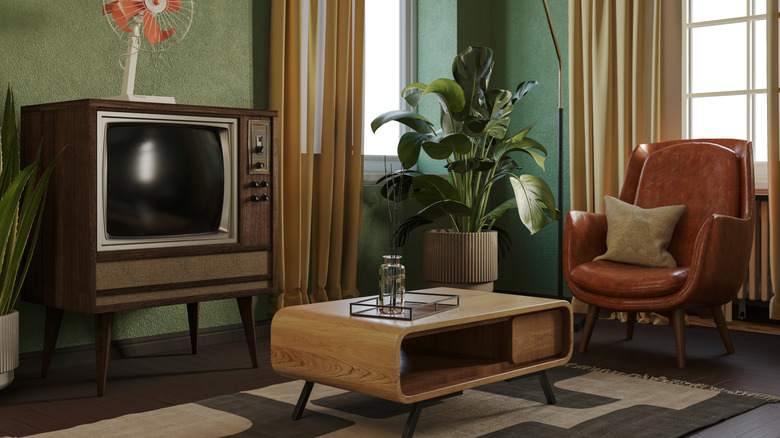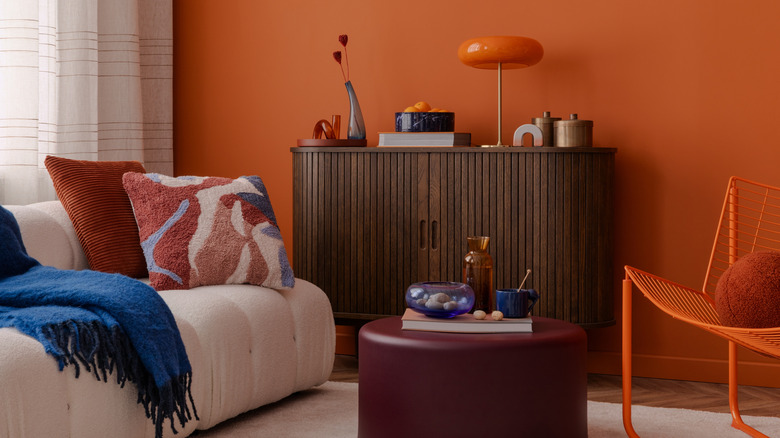The Groovy '70s Trend That's Come Back (And Might Never Go Out Of Style)
Attention to shape and form is an essential part of an effective design. For decades, homeowners and designers have aimed to nail that sense of a natural flow in the home, often utilizing furniture to achieve that end. While an era of rigid lines, crisp edges, and straight forms provided a sleek, refined, and minimal appeal for the past few decades, trends have shifted back to a more organic and relaxed nature, often exuded through the use of curves and rounded pieces. Curved furniture was trendy in the '70s as homeowners participated in the counterculture of the time, which promoted a more laid-back lifestyle. Sculptural forms and organic shapes dominated the decade as a response to the harsher geometric shapes of the '50s and '60s. And while trends ebb and flow, curved furniture has proven to be a timeless addition to our spaces.
Curved pieces offer a feeling of coziness and relaxation, not to mention the retro nostalgia many folks are craving today. But knowing how to decorate your interior with curved furniture in a way that feels natural, intentional, and meaningful is vital for achieving a seamless design. Balancing curves with straight edges, choosing organic pieces that elevate the look of the space, and pairing curvy furniture with the right functionality can make or break your design. Curved silhouettes are the seemingly undying trend that is perfect for adding style to your space. So much so, that curves may never go out of style.
Relish in curves by styling rounded furniture
Introducing curved furniture into your home is not just about finding a gorgeous statement piece, but also about focusing on the details. Start by being intentional with texture. Curved furniture is just as much about the feel as it is the visual appeal. Trendy textiles like boucle, velvet, and mohair on a curved sofa feel luxe, comforting, and inviting. And if you're looking for stunning ways to bring curves into the kitchen, consider choosing fluted materials, natural wood, or smoothed, rounded tile. Also, try incorporating curved furniture into your space by paying close attention to proportion and scale. A large curved couch could anchor your space. Pair it with a sculptural coffee table or nesting side tables for added dimension. Or, play around with height by accentuating the room with curved wall sconces or oversized lamps.
While you can go all out with curves, many designers suggest blending curvy pieces with angular forms. You might opt for a rounded dining room table on top of a large rectangular rug. In a kitchen with a rounded center island, consider using angular hardware, boxy overhead lighting, or fluted details to incorporate straight lines. Another feature of '70s nostalgia includes a marriage between function and form. Rounded furniture is great for creating conversation pits. Or, find multi-purpose furniture like rounded storage stools and coffee tables, curvy sculptural bookshelves that double as an art feature, or rounded lighting that invites curves while providing a practical element.

